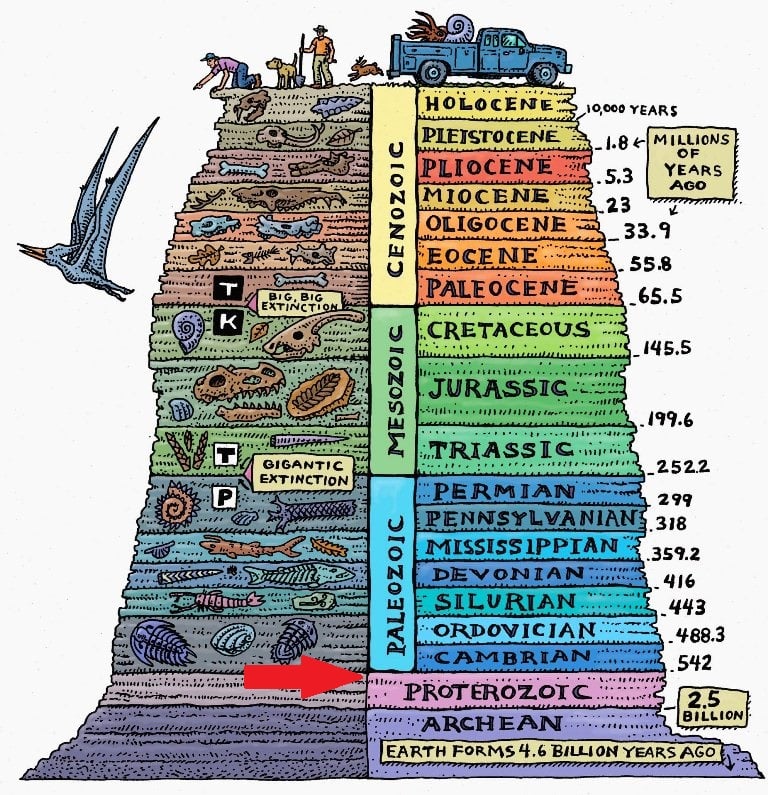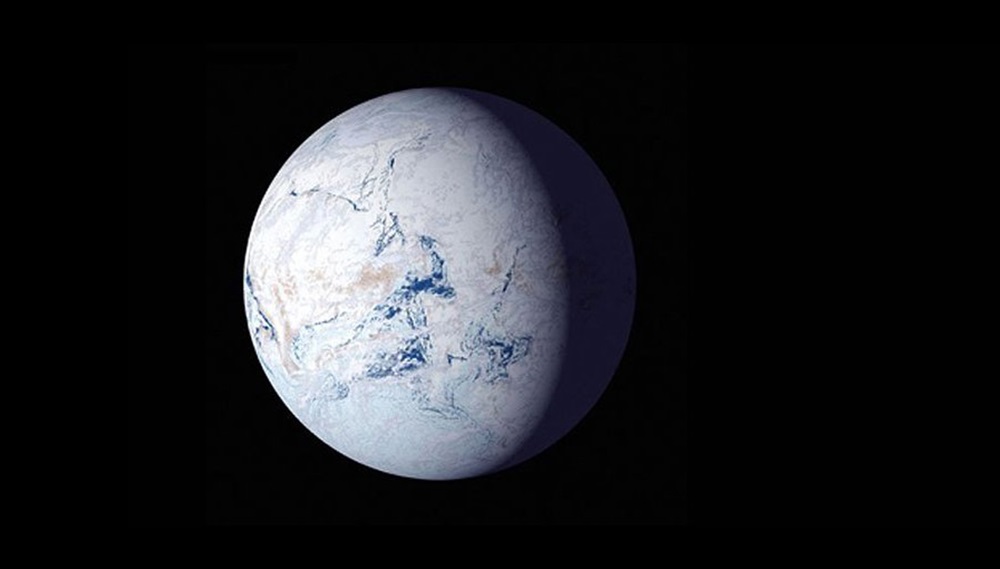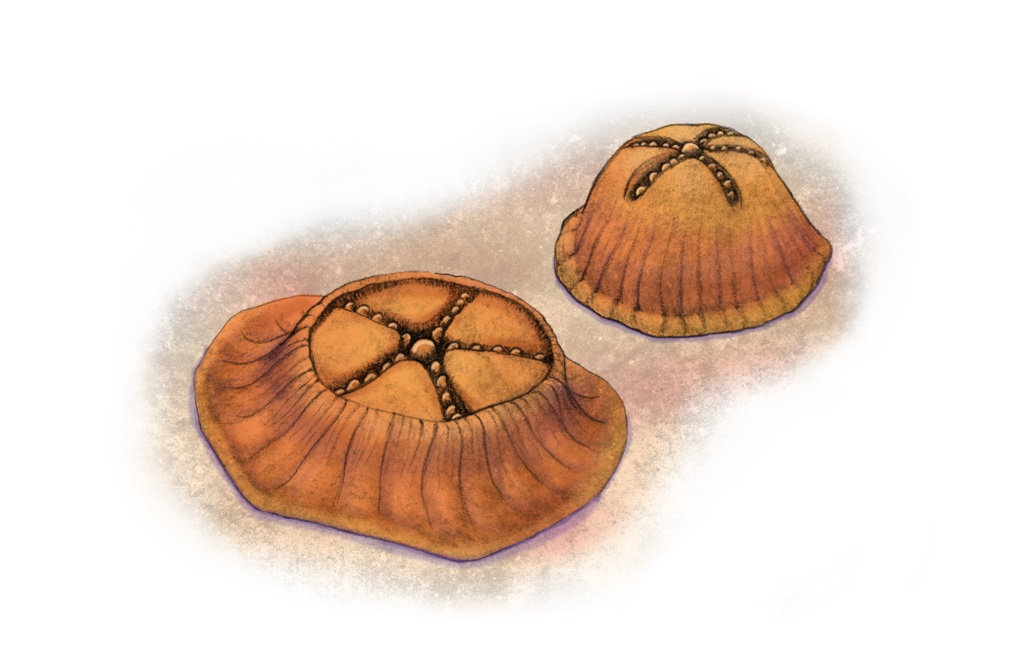The Cambrian explosion, rightfully so, is famed for the many strange and exotic creatures that evolved during this period. From Anomalocaris to Wiwaxia, many of these now-extinct organisms seem as strange to us today as any alien life would probably be.
But, there is a lesser-known yet equally odd period in the history of life on Earth called the Ediacaran. Let’s take a tour back over half a billion years to see what kind of things roamed the planet.
What was the Ediacaran era?
The Ediacaran period (also referred to as the Vendian) was a geological period of Precambrian time that spans from roughly 635 million years ago to the beginning of the much more famous Cambrian Period around 540 million years ago. It marks the end of the Proterozoic Eon and the beginning of the Phanerozoic Eon, which is still ongoing.
For reference, geological time (by extension, the history of the Earth) is split into four eons that mark the most major geological changes in Earth’s history and can span more than a billion years. These are further divided into eras based on orders of the magnitude of time smaller that span hundreds of millions of years, then periods (tens of millions), epochs, and so on.

Just prior to this era, Earth would have looked very alien indeed, with the continents of the world in a completely different position, land mostly devoid of anything living, and the seas very sparse, too. Any life that did exist was primarily single-celled or microscopic, consisting mainly of enormous colonies of bacteria and algae, as well as strange organisms called acritarchs (at least as we can tell from surviving fossils).
However, what makes the Ediacaran so special is the first emergence of larger, more complex forms of life. It was, in a sense, the foundation for the much more impressive explosion in life forms we see in the Cambrian. Collectively called the “Ediacaran Biota,” what fossils we have found in this period are very, very strange indeed.
It was a revelation when such fossils were first uncovered, as most scientists held little hope that fossils would ever be found in rocks so ancient as the Ediacaran. The reason is that more ancient rocks tend to be deeply buried and have had a very long time to be squeezed, bent, buckled, and melted by the rigors of plate tectonics.
These processes are clearly not great for the preservation of delicate organisms. However, that all changed in the late-1900s when macroscopic fossils of soft-bodied animals, algae, and fossil bacteria were found in older rocks dating from the Ediacaran, in a few localities around the world.
Ediacaran fossils have now been found in various locations, including the Ediacaran Hills of Australia, where Ediacaran fossils were first found, and where the era derives its name. Other notable locations for Ediacaran era fossils include Mistaken Point in Newfoundland and the White Sea in Russia.
These discoveries sparked a surge of interest in the Ediacaran and the Proterozoic Era that continues to this day.
But, more on that later.
What happened in the Ediacaran period?
From studying the rocks of this period around the world, geologists have managed to piece together an approximate idea of what was going on during this critical moment in Earth’s history. The period is marked by a rapid retreat of ice sheets and glaciers in the areas where Ediacaran rocks have been found.
This marks the end of the so-called and fittingly named Cryogenian Period (aka “Snowball Earth”) when ice sheets are believed that have almost encased the entire planet. This is obviously not conducive to the evolution of complex life, so it should come as no surprise that there were rapid changes in evolution in its aftermath.

Analysis of rocks from the period also seems to indicate that atmospheric oxygen levels began to rise substantially throughout this period. Some have speculated that this led to the measurable decline in carbon isotopes in marine sediments of the time, probably due to increased oxidation in the world’s oceans.
This period was also an incredibly active one, tectonically speaking, leading to the eventual formation of a supercontinent called Pannotia located roughly over the Earth’s south pole. This gigantic landmass remained intact until around 550 million years ago when it then began to break apart once again.
Quite a dramatic set of events indeed.
Why are Ediacaran fossils rare?
We’ve touched on this briefly above, but the short answer is because the rocks they are found in are so incredibly old. Fossils are incredibly rare in any case, but the more time they spend in rock, the longer they have to be destroyed or altered beyond all recognition by the never-ending processes of Earth’s systems.
To give you some idea of the problem, the chances of an organism’s remains being fossilized are insignificantly small. So small, in fact, that it is a minor miracle we ever find any at all. If the remains survive being eaten, rotting away completely, and erosion by sedimentary processes, they then have to be lucky enough to actually be preserved in some fashion.
If an organism dies in an aquatic environment, there is a higher chance it will be covered with sediment and preserved, but on land, the odds are close to zero that this will happen. To give a sort of back of an envelope calculation of the likelihood, if every single person in the United States were to be killed (about 320 million people), all we’d have left in a few million years is an assortment of 60 bones (or about one-quarter of one skeleton).
But, that is only the first step. Once fossilized, the remains need to survive the rigors of time in such a way as to be dug up and found today. Once rocks are formed they are subject to a variety of processes, from volcanism to enormous collisions of continents, that all have the potential to smash, break, melt, or expose rock layers over time.
This will lead to any fossils within them being either completely destroyed (through melting, exposure, or erosion), or being changed (cooked, squashed, sheared, etc.) beyond all recognition. The less time a fossil can spend “in the ground,” so to speak, the better the chances of it surviving for us to find.
Remember, fossils will have existed in the past too, but with no human beings to find them, they would simply have been left to their fate.
For fossils that are more than half a billion years old, the chances of them surviving all that time relatively unscathed is, as we’ve said, an actual miracle, statistically speaking.
Why are Ediacaran fossils so important?
Apart from the incredible luck of them actually being found, these fossils represent one of the most important steps in the evolution of life on this planet. As far as we know, the fossils found in deposits from this period are the first complex multicellular life on Earth.
While multicellular life is known before the Ediacaran, this is the first time we get the specialization of cells within an organism to perform different tasks. In your body, all your cells have the same DNA but develop into different shapes and sizes depending on what task they are to provide for the body as a whole.
Hair cells differ from brain cells, and both differ from muscle cells, etc. As far as we are aware, the “Ediacaran Biota” appears to be the first set of organisms to evolve this strategy of differentiation.
This is, obviously, an incredibly critical step in the evolution of more complex life forms. The organisms that evolved at this time were the precursors of organisms with skeletons.
But wait, it gets better. Most, if not all, surviving fossils of organisms from this time are so strange, that we are yet to be able to satisfactorily classify them on the great evolutionary “Tree of Life,” as you are about to find out.
What animals lived in the Ediacaran period?
And now, finally, on the main event. What follows are some examples of the strangest creatures that evolved during this period of time.
Many of these are so weird that they have no real analogies today. What is clear, however, is that some they must, in some way, be the predecessors to at least some life alive today, but which ones, and to which living major phylum (arthropods, mollusks, etc.), is yet to be properly established.
Hold on tight, this is going to get wild.
1. Arkarua adami is very hard to classify

One of the weirdest creatures from this period is an enigmatic specimen called Arkarua adami. An impression (or mold) rather than fossilized remains, this animal appears to have been disk-shaped and may be distantly related to modern-day echinoderms such as sea urchins.
The organism appears to have had a raised center, with a series of ridges around its rim. In the raised center, the creature also appeared to have a five-pointed central depression marked with lines of small dots. Those specimens thus far discovered range in size from between 1/8 of an inch (3mm) and 25/64 of an inch (10mm).
The name Arkarua derives from the Aboriginal name for a mythical giant snake called “Arkaroo.”
Scientists have no idea, as yet, of its internal structure, which makes classification of this organism problematic, to say the least. However, its general morphology does share some characteristics with echinoderms, so this is as good a bet as any at present.
Some recent research has been conducted that may shed some light on how the animal fed in life, but this is highly speculative.
2. Tribrachidium heraldicum was very weird indeed

Another strange creature from this period of time is Tribrachidium heraldicum. It is so strange that scientists cannot really group it with any living phyla.
Those fossils that have been found have a unique tri-radial symmetry and are thought to have been hemispherical in form. Like other Ediacaran Biota, the only fossils we’ve found of this creature are negative impressions on the base of sandstone beds.
The middle part of the fossil has three hooked ridges or arms, and its lobes are twisted into weak spirals. Specimens tend to range from 1/8 of an inch (3mm) to 1 and 37/64 of an inch (40mm). In life, it is thought that Tribrachidium probably used a kind of special suspension-feeding that relied on directing water currents to its central depressions via its three “arms.”
It is the best example of a group of extinct animals called the Trilobozoa but otherwise has no analogies today. However, it does show some similarities to living edrioasteroid echinoderms that have similarly raised ridges in the center of their main bodies.
Some scientists have also classified it as a distant relative of the phylum Cnidaria (corals and anemones).
Specimens of the creature were first found in Rawnslay Quartzite and Flinders Ranges in South Australia, but they have also been found in other Ediacaran formations in Ukraine and Russia.
3. Spriggina might be an early arthropod, or something completely different

Another fascinating organism from the Ediacaran is Sprigginia. Ostensibly resembling a kind of feather, scientists are not entirely sure where to place the creature in the evolutionary “Tree of Life.”
Its most prominent features are an obvious bilateral symmetry and what appears to be some form of armored “head” at one end. First found in Ediacaran rocks from Australia, specimens of the organism range in size from 1 and 1/5 inches (3 cm) and 2 inches (5 cm).
Believed by some to have been a predator, its underside was covered with two rows of tough interlocking plates, while one row covered its top; its front few segments fused to form a “head.”
Some efforts have been made to link it to modern phyla, with some scientists claiming it was an early annelid (worm), a rangeomorph-like frond of some extinct plant, a variant of Charniodiscus, a proarticulatan, or an arthropod possibly distantly related to the trilobites of the Cambrian to Permian periods.
Its linkage to trilobites could, however, simply be an early example of something called convergent evolution. This is where creatures from unrelated phyla develop physical traits independently, like the wings of birds and those of bats.
4. Heaven knows what Dickinsonia was

Yet another fascinating creature from the Ediacaran is yet another enigmatic fossil called Dickinsonia. Found in more or less all Ediacaran rock formations, there is no consensus on what modern phyla, if any, it belongs to.
The fossils resemble bilaterally symmetrical, ribbed, oval shapes, but beyond that few other features of the creature in life have been preserved. Specimens can range from being roughly circular to the more common oval shape that expands towards one end and seems to show that the main body was segmented.
Some scientists have proposed that the segment could be filled with water in a similar fashion to modern-day airbeds, but this is hotly debated.
Typical specimens range in size from less than an inch long up to 4ft and 7 inches (1.4 meters). Thickness can also vary from a fraction of a millimeter to about an inch.
Various theories have suggested that it may have been a form of fungi or its own discrete and long-extinct kingdom of organism.
However, some recent studies have found what appears to be evidence of cholesterol molecules in fossils of Dickinsonia that might indicate they were very early animals, possibly akin to worms.
5. Kimberella looked like some kind of ancient slug

Resembling, very roughly, a modern-day slug, Kimberella is another strange fossil from the Ediacaran. Its lineage is still unknown and presumed long extinct, but it does show bilateral symmetry like many other organisms from the period.
First found in the Ediacaran Hills of Australia, others have now been found in other deposits in Russia. It was initially associated with jellyfish, but fossils have since been found associated with scratch marks on rocks thought to have been made by its mouthparts.
Some have postulated that it lived a similar mode of life to modern sea slugs or other gastropods by feeding on blankets of microorganisms on subsea surfaces.
The exact classification of the creature is quite important for taxonomy, as it may help interpret some mysteries of the later Cambrian Explosion. Primarily the fact that if it is an early mollusk (or at least a protosome – which were so named because it was once thought that the first phase in their gut development was the formation of a mouth – protosome means ‘first mouth’), it could indicate that protostome and deuterostome lineages probably diverged before 555 million years ago (in deuterostomes – ‘second mouth – gut development begins with the anus). Even if it was a bilaterian but not a mollusk, its age would indicate that animals were diversifying well before the start of the Cambrian.
6. Believe it or not, Rangea is thought to have been an animal

Rangea is yet another of the strange creatures found in Ediacaran rocks. A six-fold radially symmetrical organism, the most notable feature of this creature is its leaf or frond-like appearance.
For this reason, you can be forgiven for thinking this might actually be some kind of prehistoric plant.
Rangea was one of the first complex creatures to be found in the Precambrian and is still one of its most striking examples. Specimens range in size from about 25/64 of an inch (1cm) to over 3 and 15/16 of an inch (10cm) in length and are thought to have embedded or affixed themselves to subsea surfaces similar to modern-day sea pens.
So far, around six similar creatures have been found, all of which are grouped into the family rangeomorphs (named after Rangea).
7. Ernietta might have looked like a squishy bowl

And finally, may we present the equally strange Ernietta. Similar in lifestyle to the aforementioned Rangea, this creature is thought to have spent its days partially buried on the seafloor.
The animal has no living relatives (as far as we can tell) and was first discovered around 1966 in Ediacaran-age fossil containing rocks in Namibia. Scientists who have studied the remains of this organism believe it resembled a sort of frilled open sack or upturned bell that sat just above the point where a water body met the seabed.
It is currently believed that it fed through suspension feeding from the water column small eddy currents would be formed inside its “bowl.” Though it is possible that some feeding appendages were used but have not been preserved.
Like most creatures we’ve described above, it is very difficult to classify Ernietta based on modern-day phyla. That being said, it may be an early relative of modern-day corals.
And that’s a wrap ancient organism lovers.
Trust us when we say the above are but a select few of the many strange creatures that existed at this time. While we can never truly be sure how they looked or where they fit into the grand scheme of life on Earth, the very fact we know about them is enough of a miracle in and of itself.
 SHOW COMMENT (1)
SHOW COMMENT (1)










